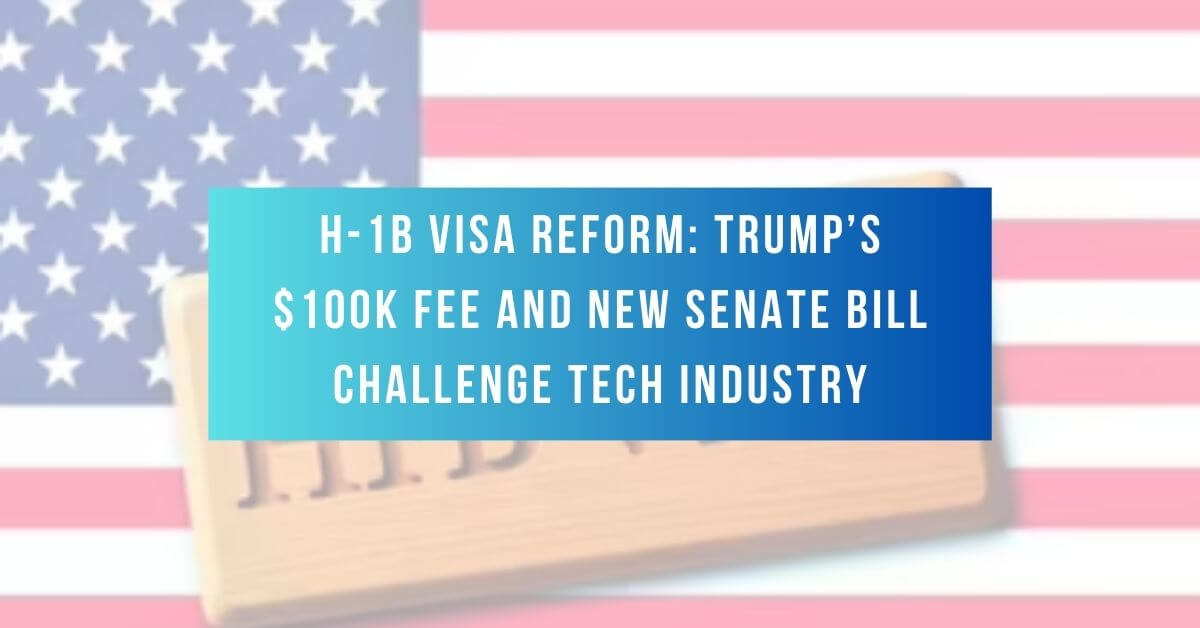The U.S. is moving toward sweeping changes to the H-1B visa system, including higher wage requirements and new fees. Learn what this means for workers, employers, and the future of tech
For decades, the H-1B visa has been a beacon of hope for hundreds of thousands of skilled professionals around the world—a ticket to building a life and career in the United States. But that beacon is now flickering under the threat of the most dramatic reforms in the program’s history. Imagine a world where the minimum salary requirement skyrockets to $150,000 and companies are charged a staggering $100,000 annual fee to hire you. This isn’t a distant hypothetical; it’s the reality being proposed by lawmakers and former presidents, signaling a seismic shift in America’s approach to global talent.
This essential guide breaks down the potential upheaval facing the H-1B system. We delve into the sweeping proposals that could price out all but the largest corporations, analyze the intense industry backlash, and explore the profound global implications, particularly for Indian and Chinese professionals.
The H-1B visa program has long been a gateway for skilled foreign professionals—especially in technology, engineering, and medicine—to work in the United States. But recent proposals and executive actions signal a dramatic shift in how the program may operate in the coming years. From soaring wage requirements to annual fees as high as $100,000, these reforms could reshape the future of skilled immigration, U.S. competitiveness, and global talent mobility.
The American Tech Workforce Act Proposal
Senator Jim Banks recently introduced the American Tech Workforce Act, targeting what he calls loopholes that enable corporations to undercut American wages by relying heavily on foreign labor.
Key proposals include:
- Raising the wage floor for H-1B workers from $60,000 to $150,000, discouraging reliance on cheaper foreign labor.
- Eliminating the Optional Practical Training (OPT) program, which currently allows foreign graduates to work in the U.S. for up to three years.
- Replacing the lottery system with a highest-bidder model, where companies essentially compete financially for visa slots.
Supporters argue this ensures fairness for American workers, while critics warn it could choke off much-needed international talent in critical industries.
Trump’s $100,000 H-1B Fee: A Game-Changer
Adding to the uncertainty, former President Donald Trump signed an executive order that would require companies to pay $100,000 annually for each H-1B visa holder.
Key Highlights of the Order
- Applies to new applications, lasting for up to six years.
- Introduces a “gold card” visa—a fast-track permanent residency option for those able to pay $1 million.
- Aims to deter companies from sponsoring foreign workers unless they are deemed exceptionally valuable.
Critics, however, argue that such high fees would devastate small and mid-sized businesses, price out start-ups, and undermine U.S. competitiveness in sectors like AI and advanced tech.
Industry Reaction and Concerns
- Tech Giants: Companies like Amazon, Microsoft, and JPMorgan advised H-1B employees abroad to return to the U.S. immediately before new rules took effect, underscoring the level of disruption.
- Immigration Lawyers: Experts warn the fees could be a “nail in the coffin” for small businesses that rely on H-1Bs to fill critical roles.
- Economists and Analysts: Some argue the reforms could push companies to relocate high-value operations overseas, weakening the U.S. in the global talent race.
- Policy Watchdogs: Questions have also been raised about the legality of imposing such high fees, since Congress has only authorized cost-recovery charges for visa processing.
Global Implications
The stakes are particularly high for India, which accounts for over 70% of H-1B beneficiaries, followed by China. For many Indian professionals, the H-1B is not just a career opportunity but also a pathway to permanent residency. Any shift in policy directly affects thousands of workers and their families, along with the companies that depend on them.
What Happens Next?
- The American Tech Workforce Act is now under Senate review, facing scrutiny from both pro-business groups and immigration reform advocates.
- Trump’s executive order—if enforced—would immediately alter the cost structure of sponsoring H-1B workers.
- With upcoming elections and immigration continuing to be a hot-button issue, the H-1B program is likely to remain a political flashpoint.
Conclusion
The H-1B visa program is at a crossroads. Proposals to raise wages, eliminate post-study work options, and impose staggering fees reflect a shift toward protectionism and domestic labor prioritization. While the intention is to safeguard American jobs, critics warn the U.S. risks losing its edge in global innovation by discouraging foreign talent. For businesses, workers, and policymakers alike, the coming years will determine whether the U.S. remains a magnet for global expertise—or taxes away its competitive advantage.
FAQs
-
What is the H-1B visa?
It’s a temporary, employment-based visa that allows U.S. employers to hire foreign workers in specialty fields such as technology, engineering, and healthcare.
-
What changes does the American Tech Workforce Act propose?
The act seeks to raise the minimum salary for H-1B holders to $150,000, eliminate the OPT program, and replace the lottery with a highest-bidder system.
-
Who will be most affected by these changes?
Small and mid-sized businesses, international graduates, and Indian professionals—who make up the majority of H-1B holders—will feel the greatest impact.
-
How does Trump’s executive order affect H-1B visas?
It requires employers to pay $100,000 annually per H-1B worker and introduces a $1 million “gold card” for permanent residency.
